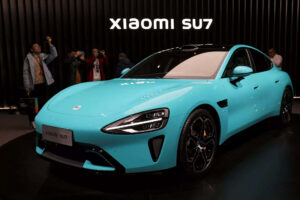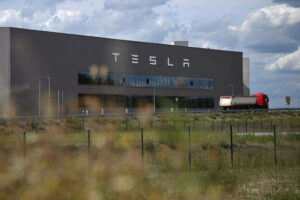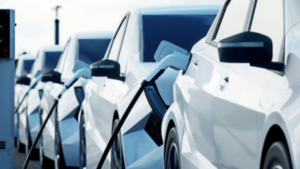 “>
“>As the PM E-DRIVE (Electric Drive Revolution in Innovative Vehicle Enhancement) website also says, ‘the eligibility criteria for e-trucks are being finalised and will be announced soon’. Along with that, the equally important part of incentive level may also be notified soon. The Ministry of Heavy Industries (MHI) has proposed an INR 10,000/kWh incentive for medium and heavy duty (M&HDT) electric trucks.
In a note shared with truck makers, a copy of which has been reviewed by ETAuto, three levels of subsidies – INR 10,000/kWh, INR 15,000/kWh, and INR 20,000/kWh have been listed. It claims that with this range of subsidies, the upfront cost of an electric truck can go down by 20%-40%, and the TCO be reduced by 11%-29%.
With the ‘moderate’ subsidy level of INR 10,000/kWh, the proposed subsidy amount is capped at INR 8 lakh, for e-trucks in the 3.5 tonne to 7.5 tonne category, and at INR15 lakh for e-trucks above that tonnage, till 12 tonne, under N2 (Medium Duty Truck) category vehicles. For N3 Rigid Truck (Heavy Duty Truck) category e-trucks, the incentive is capped at INR20 lakh for 12-25 tonners, and INR 30 lakh for e-trucks above 25 tonne. For N3 Tractor Trailer (HDT) e-trucks above 35 tonne, the proposed incentive cap is INR 40 lakh.
“It’s good that the electric truck segment is finally being considered for incentivisation. We would be interested to know more in details about the process, and timeline of the subsidy payment,” Uday Narang, Chairman, Omega Seiki Mobility tells ETAuto. His company, currently operating in the electric three-wheeler market, plans to enter the medium duty truck market with a 3.5 tonner, and a 7-tonner. Its first electric small truck, a 1.0/1.5 tonner, is scheduled for launch by December this year.
It is estimated that the INR500 crore earmarked for electrification in the M&HCV segment will support adoption of 1975 e-trucks under the INR 10,000/kWh subsidy scenario, while the INR15,000/kWh subsidy will support 1342 e-trucks, and 1014 e-trucks will get support if the subsidy level stands at INR20,000/kWh.
MHI proposes the INR 10,000/kWh subsidy level as it will allow a larger number of electric trucks to be incentivised. ‘It will not only bridge the TCO gap between electric trucks and diesel trucks significantly across different segments, but also support a greater number of trucks for deployment’, the note states..
It is proposed that we use the moderate subsidy scenario, which can support 1975 electric trucks with a total budget of INR 500 crore. It will not only bridge the TCO gap between electric trucks and diesel trucks significantly across different segments, but also support greater number of trucks for deployment.
According to research by the ICCT (International Council on Clean Transportation), electric trucks in India produce 17%–29% fewer greenhouse gas emissions than diesel trucks when using grid-average electricity and 78%–83% fewer emissions when powered by renewable energy.
Amit Bhatt, ICCT’s India MD argues for incentivisation of electric trucks in India by saying, “trucks constitute only 3% of the total vehicle fleet, but contribute to 44% of CO₂ emissions from India’s road transport sector. Therefore, decarbonising transport in India must prioritise cleaning up the trucking industry. Electrification is the most promising pathway.”
While the sector may qualify for incentivisation for electric vehicle (EV) technology, an argument from the industry is also that the quantum of subsidy as a percentage of the vehicle’s cost should be encouraging enough for fleet operators to shift to EVs. The proposed INR10,000/kWh subsidy is equal to the incentive enjoyed by electric two-wheelers under the FAME II scheme, which expired in March this year. The figure originally stood at INR15,000/kWh, with a cap of 40% of the vehicle’s cost.
Another industry executive says that the qualification criteria of a compulsory scrappage certificate may be a dampener. It is proposed that the incentive for e-trucks will be provided ‘only against furnishing scrapping certificates issued by MoRTH-authorised registered vehicle scrapping facility(ies) (RVSF) for ICE trucks of equal or higher gross vehicle weight (GVW)’.
A provision of RVSF scrapping certificate transferability will also be provided as per MoRTH (Ministry of Road Transport and Highways of India) norms.
To learn more about the electric vehicle ecosystem and meet the key industry leaders, click here.






